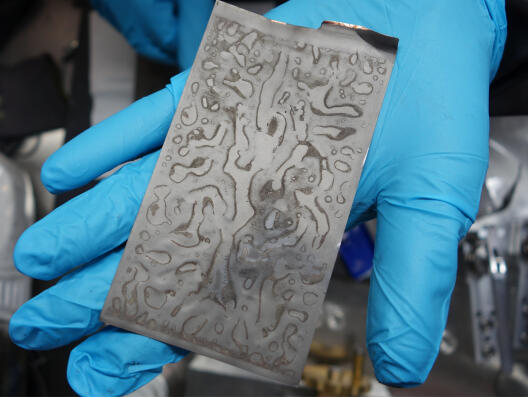Identifying the Influence of Lithium Plating
Optimising performance and safety of the lithium-ion battery (LIB) are research’s key objectives at MEET Battery Research Center. These key cell parameters are partly limited by so-called lithium plating, in which metallic lithium forms and deposits on the surface of the anode during battery charging. Especially when plating occurs in large quantities, it reduces the lifetime and can lead to a safety-relevant short circuit in worst case. Research has so far paid little attention to the influence of a small amount of lithium plating on the ageing process of the LIB. A scientific team led by MEET researchers Dr. Philip Niehoff and Patrick Münster has now discovered that small amounts do not affect the performance and safety of the battery cell during its life cycle.
Influence of lithium plating depends on quantity
"Previous research, which is based on large amounts of lithium plating, is not sufficient. Under ‘moderate usage conditions, for example at room temperature and without extreme charging speeds, we do not expect lithium plating on a large scale," explains Dr. Philip Niehoff. “It is therefore even more important to quantify lithium plating.” After their formation, the research team examined the cells and especially the surface morphology using state-of-the-art microscopic and spectroscopic methods. In the first phase, the scientists quantified the amount of lithium plating. In the second phase, they measured how performance and safety of the cell are influenced by lithium plating during ageing.

Their research showed that small amounts of lithium plating do not impair the battery cell significantly. Patrick Münster from MEET Battery Research Center emphasises: "Based on our results, we will examine the phenomenon of lithium plating in more detail. Is there a limit above which negative effects occur? And how are lithium plating and other ageing mechanisms in the lithium-ion battery related to each other, for example the constant growth of the Solid Electrolyte Interphase (SEI) and the Cathode Electrolyte Interphase (CEI)?" Studies focusing on these and other questions are now being initiated by MEET team.
Detailed results published in scientific journal
The scientists Patrick Münster, Marcel Diehl, Dr. Markus Börner, Dr. Philip Niehoff and Prof. Dr. Martin Winter from MEET Battery Research Center as well as Prof. Dr. Michael Ryan Hansen and Joop Enno Frerichs from the Institute of Physical Chemistry at the University of Münster have published their research results as an open access article in the "Journal of Power Sources".

